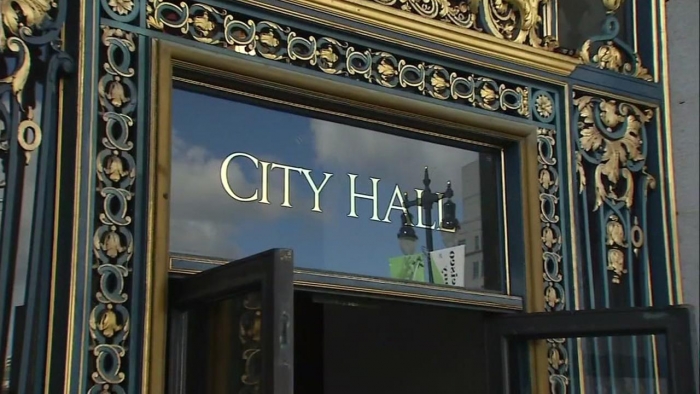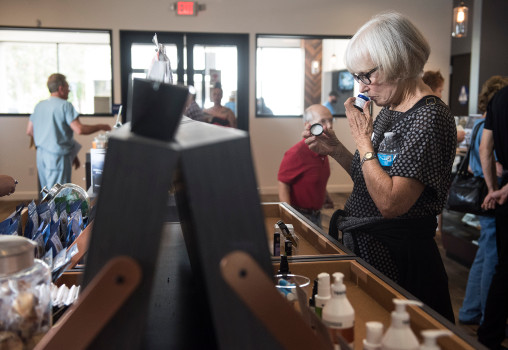More than a month after California’s regulation of marijuana, only a small share of the tens of thousands of cannabis growers have joined the system — threatening the state’s shift to a regulated market and the promise of a billion-dollar tax windfall.
Fewer than one percent of the state’s 68,120 cannabis cultivators have been licensed, according to a new report published on Monday by the California Growers Association, the state’s largest association of cannabis businesses.
Growers can’t meet the cost of complying with regulations, or are prohibited from growing due to local land-use policies, according to the report, “An Emerging Crisis: Barriers To Entry In California Cannabis.”
“Without broad participation, legalization will look a lot like prohibition,” with many illicit growers, it concludes. “The current system will not achieve its goals without fundamental and structural changes that allow small and independent businesses to enter into compliance.”
Bringing the underground market into the regulated market means more product, more customers and more money. A 2017 study by the University of California Agricultural Issues Center at UC-Davis estimated the state’s recreational marijuana sales could reach $5 billion a year.
But if governments don’t have the tax revenues of licensed businesses they can’t crack down on environmental violations or “trespass grows” on public land, according to the report.
The state’s Bureau of Cannabis Control was closed for the President’s Day holiday and unable to comment. It has a backlog of applications to process and has predicted that more growers will come into the system.
Cannabis is primarily grown by small farmers on plots of 2,500 square feet, or one-twentieth of an acre. These small growers face the toughest hurdles in complying with regulations, according to the report.
Monterey County, for example, is not issuing licenses to small traditional outdoor farmers in the more remote reaches of Big Sur and Carmel Valley. Instead, the county is issuing licenses to high-tech greenhouse growers, mostly owned by well-funded outsiders, on the edge of urban Salinas.
It costs about $750,000 a year to rent a greenhouse, pay taxes and take other steps to come into compliance, said an unlicensed former grower who is now a consultant with Verdant Valley Solutions in the Salinas Valley, who asked to remain anonymous.
“I’d be upside down before the first year is over,” he said. Instead, “I’m looking at stepping out of a 20-year career and reinventing myself… I don’t think I can do it unless they allow outdoor growing on our own property and tax us in a way that is amicable. It we want to allow everyone — like owning a restaurant — it needs to be more fair.”
As of February 7, merely 534 of the state’s growers, or 0.78 percent, are licensed, according to the new report.
“It’s all about access to capital,” said Kaiya Bercow of Santa Cruz County’s Utopia Cannabis, which has received licenses for cultivation and manufacturing.
“If you are a cannabis operator, you have limited bank access. And you are in a business that is least likely to get external funding, because of risk,” he said. “Investors are hesitant to take legal risk and financial risks.”

“It’s what you’d expect when applying to be a business in California,” said Bercow. “However, cannabis has not developed with that process. Most, if not all, cannabis producers in California started without having to apply. They never built a team; they don’t have those internal skills. So they must either hire new employees, learn that new skill set or pay costly consultants.”
Only 13 of California’s 58 counties have passed an ordinance to allow and regulate commercial cannabis activity as of February 2018. An additional six counties are likely to pass an ordinance in the near future and 14 counties are studying the issue with the intent to make a decision in 2018. The survey found that 25 counties have a ban on commercial cannabis activity with no clear plan to reconsider the issue.
But zoning restrictions can block growing. In Sonoma County, a ban on rural residential zones has excluded over 3,000 growers from the regulated market.
The state’s 2016 legalization measure, Proposition 64, set rules for the cultivation and sale of cannabis. It downgraded the punishment for growing or possessing large amounts of unregulated marijuana from a felony to a misdemeanor.
Tim Blake, founder of California’s cannabis competition The Emerald Cup, asserts that it’s time for long-time cannabis outlaws to move forward into the regulated world.
“If we lose some of the ‘old school’ farmers, that is sad, but that is part of it. They’re a dying breed,” he said, in a recent interview. “It’s time to get rid of the illegal market. People have been saying ‘one more year, one more year, one more year’ for 30 years. Now that year is here.”
But counties and municipalities haven’t done enough to ease the process, said Dave Potter of the Monterey County Cannabis Industry Association. Rather than dumping their new cannabis tax revenues into the general fund, as is too often done, communities should build a team focused solely on bringing businesses into compliance, he said.
“The jurisdictions with the greatest success are those that create a separate department with everyone at the table — planning, public safety, agriculture, health — that does nothing but bring these people into compliance,” said Potter, a former county supervisor whose Potter Consulting business specializes in permitting and business development. Monterey County is now creating such a team, he said.
“These businesses want to be legal, but they need help,” said Potter.
credit:420intel.com













